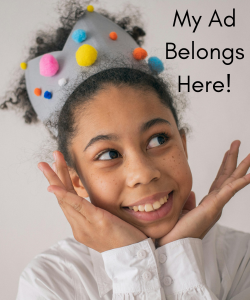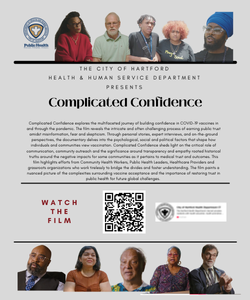By Jonathan P. Higgins
Jamal Jordan embraces the unique and profound beauty of aging LGBTQ couples. For many queer and trans people of color (QTPOC), love is complex.
It isn’t always something that comes naturally to those who’ve been excluded, and often the term “love”—whether it’s being expressed by friends, family, or someone you’ve been intimate with—comes with conditions. For many, the thought of being loved, or in love, seems unfathomable. I understand these nuances firsthand. I’ve often been reminded that certain factions of the LGBTQ community find my Blackness, fatness, and femininity unattractive, making it even harder for me to love myself.
Over time, I developed a complicated relationship with the word “love” and wondered if I’d ever find it after constantly receiving the “no Blacks, no fats, no femmes” message from suitors on dating apps. Similarly, visual journalist Jamal Jordan rarely, if ever, saw queer Black people in love when he was younger. “I spent most of my teenage years believing that love between two Black men wasn’t even possible,” Jordan wrote in a 2018 article for The New York Times. Despite increased support for marriage equality and more queer people on television, “None of these people looked like me,” wrote Jordan.
Once he became an acclaimed journalist, he offered a gift to his younger self—a striking visual representation of QTPOC love. In 2018, Jordan created “Queer Love in Color,” a groundbreaking photojournalism project for The New York Times that documented the love stories of queer couples of color. The project evolved into an eponymous book, published to acclaim in 2021. Jordan has now turned his attention toward another overlooked demographic: queer elders. His quest began with two simple questions: “After 50 years of fighting for rights and visibility, have queer elders succeeded in recapturing their dignity?” he asked in a 2019 New York Times piece. “And could they pass that along, in person-to-person relationships, to younger generations?”
Now Jordan, who is a civic media fellow at the University of Southern California, is helming Old & Queer, a YouTube series about aging QTPOC people. “I took the question to Facebook,” Jordan recounted in a 2018 essay for The Times. “Are there any gay/queer/Black/Latinx couples who’re down to be photographed?” There, responses grew. “I checked my phone and saw dozens of new notifications: messages and comments encouraging me to do the project.” Jordan began to understand that his project would address not just the issue of visibility, but how Black and Latinx love always has, and continues, to exist. “I think being able to fill in that history for queer people has been really grounding, to understand that you’re not unique in the things that you’re experiencing,” Jordan told Level. “But you’re also not alone in them either.”
Through these projects, Jordan’s not only capturing QTPOC love on camera; he’s also making sure there’s a visual archive for other queer people to see. We meet Paulette and Pat, who got together when they were both 65. As they sit on a park bench, we hear them talk about the idea of compromise and “fit.” While Paulette says she felt an immediate closeness and connection to Pat, we also learn that Pat struggled to give up nonmonogamy to be in a relationship with Paulette. For both, the relationship was about coming to terms with who they were before they met each other and becoming better individuals for one another. They speak about how their love highlights their mortality and how they don’t know how much longer they have with one another. “The goal is to be happy,” says Pat. “I had to learn that this is my person,” she continued. “This is the person that I want to be with until God calls me home.”
Love has offered both Pat and Paulette a freedom they never had growing up. “Every time [my mother] would see a gay woman, she would say, ‘If one of my children become a bull dyke, I’ll kill them,’” Pat shared with Not Another Second. “Well now, we have a lot more freedom in what we are doing. … We’ve earned it. We’ve actually earned the right to be our authentic selves.” Through the project, Jordan highlights key themes that are often left out of mainstream LGBTQ conversations, like the journey to loving authentically that is part of the journey to acceptance. Take Miss Simone, a self-assured Black trans woman whose green and blue hair shimmers in sunlight through a window. When asked, “How old are you?” this lady of a certain age quickly responds, “Next question.” When Miss Simone talks about what she went through to be her authentic self, her relationship with her family sparkles. “My family supported me,” she tells Jordan. “The ones I didn’t have support from wasn’t my family. It was the communities in which I lived.”
Miss Simone’s responses underscore something so many QTPOC go through when seeking romance—the difficulty of finding love in a community that may not like or love you. I had been treated poorly by so many people in the world, specifically while dating. I clearly remember dating in my younger years and being told by someone that I was “hard to love.” When someone was interested in me, I never knew how to respond. I always felt the love was conditional, which left me feeling sad, resentful, and angry. Now that I’m older (and have spent a lot of time and money on therapy), my healing makes loving so much easier to do.
While many QTPOC spend their lives living with the residual hurt and pain from marginalization and oppression, Jordan offers the idea that being old and queer means giving yourself and others the love that might have never been given to you. “I heard from one man in his 70s who said he wished he could’ve seen these images growing up,” Jordan shared in his 2018 Times essay. I wish I had too. Finding any type of love is a journey, and sometimes the difficult things we go through as QTPOC are what make our love that much more beautiful. As I inch closer to my 40th birthday, I am thankful for Old & Queer. It’s a gift to be able to share in these stories, and they’re a much-needed resource. My hope is that this series will help break down the stereotypes that surround queer love and inspire us to see its joy and beauty, even if it has aged just a little.
This article was originally published in YES Magazine .





